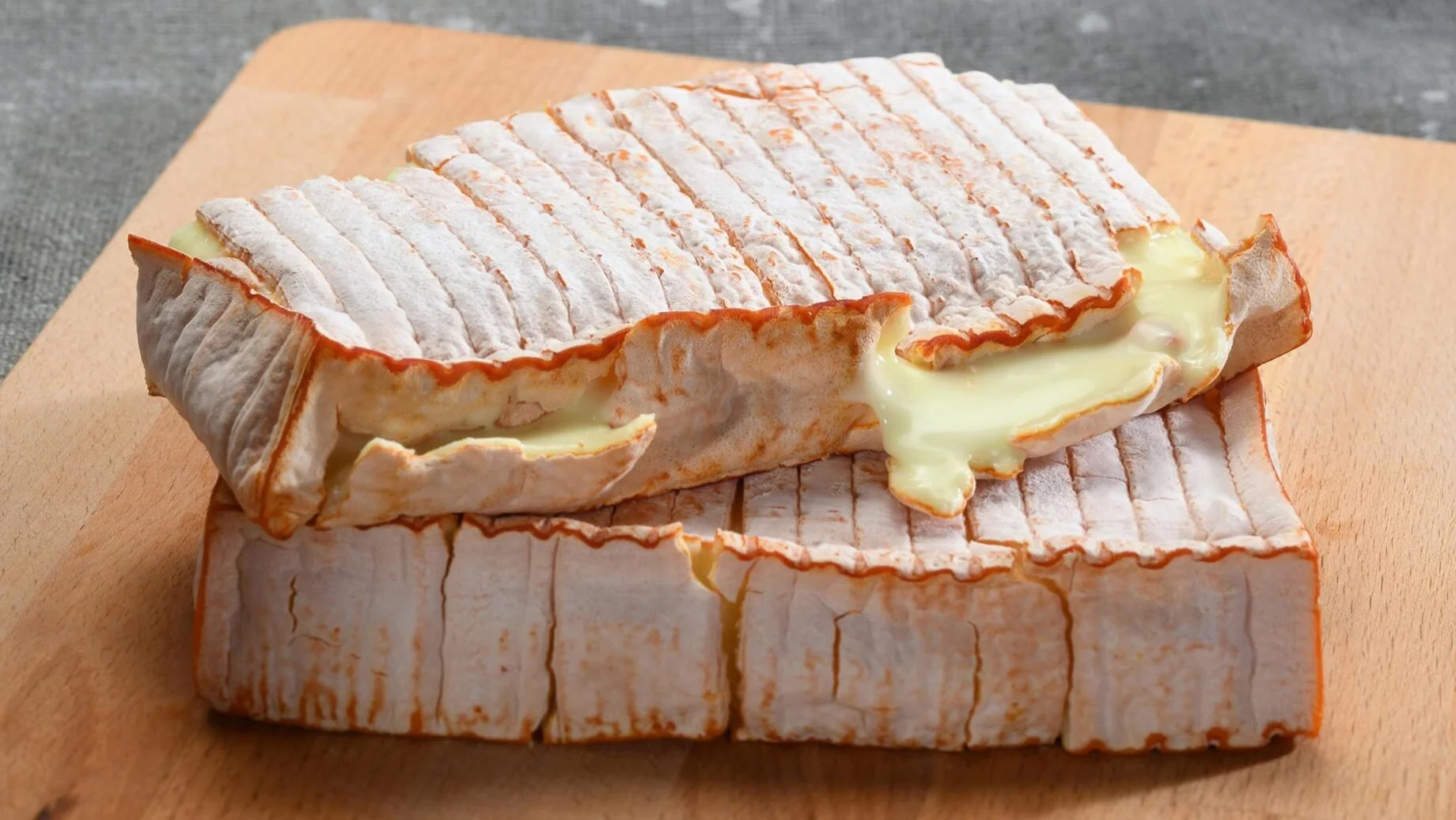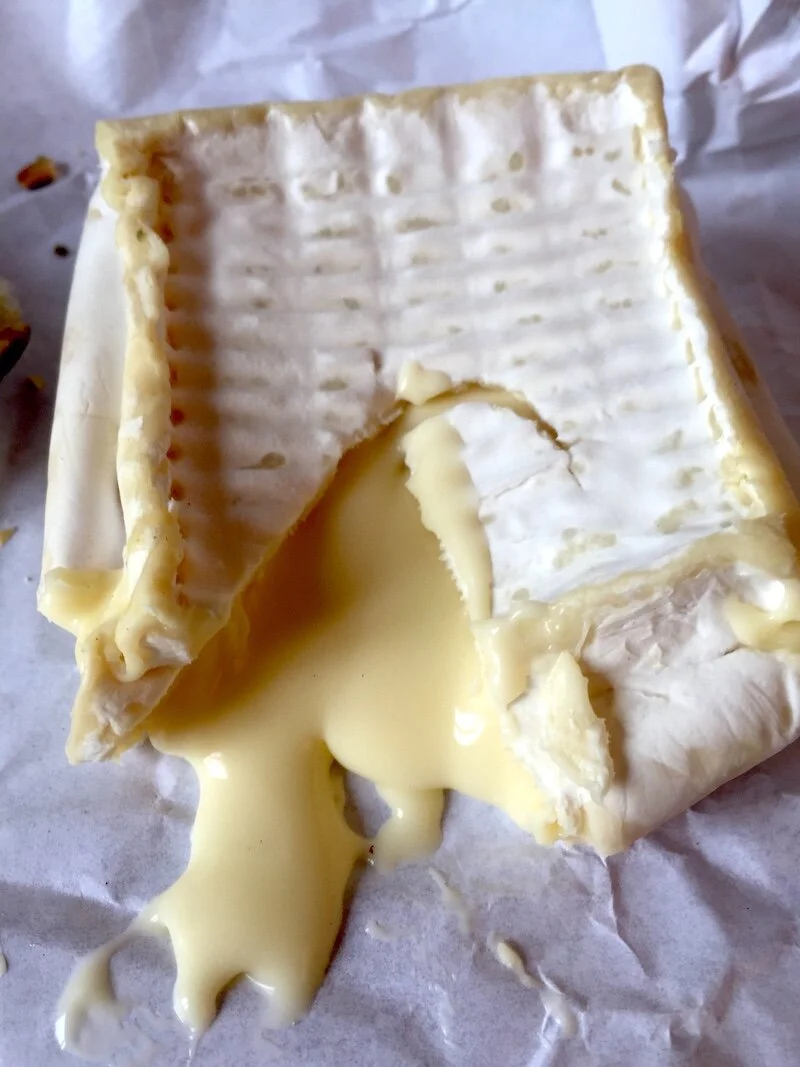Photo: Neal’s Yard Dairy
World Cheese Encyclopaedia - Each Sunday learn all about a new cheese.
This week Harbourne Blue from the UK.
Photo: Neal’s Yard Dairy
Country: United Kingdom 🇬🇧
Region: Devon
Made from: Goat’s milk
Pasteurised: Yes
Texture: Crumbly, dense
Taste: Spicy, sweet, yoghurt, floral
Certification: No
Aging: 3 to 6 months
Harbourne Blue is a semi-soft cheese hand-made from pasteurised goat’s milk. Originally made by Robin Congdon it is now one of three cheeses made by Ben Harris and his team at Ticklemore Dairy in Devon. Harbourne Blue follows a Roquefort recipe, but uses goat’s milk which gives it a style entirely of its own.
Harbourne Blue has yoghurty, clean flavours, tending towards the floral and aromatic. It usually has very light blue veining and a crumbly texture. The shape is round with a 16 cm diameter and a 5 cm height, this cheese weighs 3 kg. The white pate is crumbly and full of grey green veins. The mould gives a mild not too strong taste. The cheese has a sweet, spicy taste and aromatic smell. After maturation, the cheese forms a crumbly, dense and melting texture. It is suitable for vegetarians and contains 48% fat.
The goat's milk in Harbourne Blue comes from a farm in the area. The starter culture, vegetarian rennet and the penicillium roquefortiis are added to the heated milk successively. Curdling lasts 45 minutes. The curds are stocked in moulds for two days. After that, the cheeses are turned and salted and then stand again for a few more days. Holes are poked in the cheeses in order to allow the mould to develop. The cheeses are then aged for three to six months.
Photo: lafromagerie.co.uk
History
Robin Congdon of Ticklemore Dairy started out making hand-made cheese at a time when it could easily have seemed like an anachronism, with the rise of supermarkets and big creameries. However the success of his products has proven that his quality artisan cheeses are worth the time and care put into them.
A mile or so upstream from Sharpham's Dairy, up on a hill above the River Dart, you'll find the Ticklemore Cheese dairy. Back in the 70s Robin Congdon was farming sheep on this land. No-one else was milking sheep ... so he decided to start. Making yoghurts led on to cheese, and a determination to make something inspired by Roquefort, the French ewes' milk blue matured in caves.
Photo: decanter.com
30 years on, the famous Beenleigh Blue which resulted from these experiments is matured in what Ben Harris - now in charge - calls the cave. With it's running water and constant fresh air flow, it's an attempt to mimic the conditions you'd find underground. It's clearly working, as Beenleigh and its siblings Harbourne Blue (goat) and Devon Blue (cow) are blue cheeses that bear comparison with the best of the best, and indeed Ticklemore is a place of pilgrimage for aspiring makers from across the world.
How to Enjoy It
Being a milder cheese, it can be served with wines like Sauternes, Port and Bordeaux. I t also pairs well with sweet cider.
Sources: cheese.com, Neil’s Yard Dairy, Ticklemore Cheese, androuet.com, lafromagerie.co.uk, thecheeseshed.com, decanter.com
Looking for a different cheese? Search the whole cheese encyclopaedia here.





























